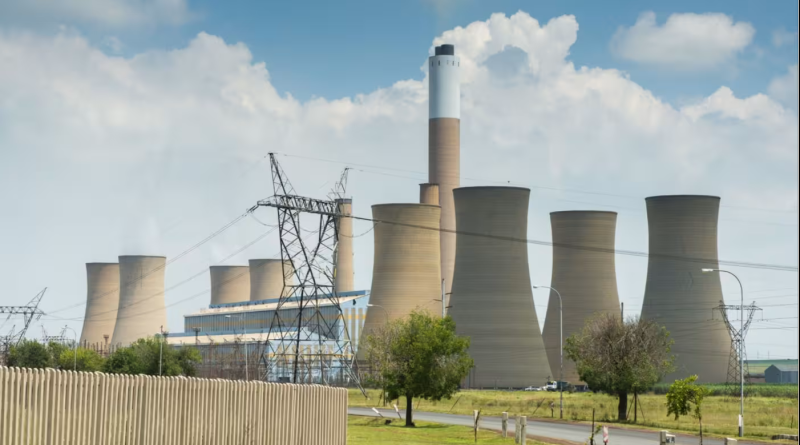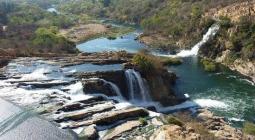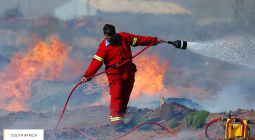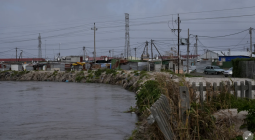A cautionary tale from South Africa’s ‘just energy transition’

Hello and welcome back to Energy Source, coming to you today from London and Johannesburg. Brett Christophers, the author of The Price is Wrong: Why Capitalism Won’t Save the Planet, had a hot take in last weekend’s FT: we must not be fooled into thinking that China’s rapid rollout of renewables means the energy transition is on track. The switch to green electricity is very unevenly distributed, as today’s dispatch from the FT’s Rob Rose in South Africa makes clear. The country, which relies on coal for more than 70 per cent of its energy and is the world’s 11th-biggest emitter of greenhouse gases, risks losing momentum in its shift to renewables. A new coalition government is grappling with how to reduce the country’s dependence on coal, but as Rob explains, there is likely to be plenty of economic and political turmoil ahead. — Malcolm
An ‘atomic bomb scenario’ for jobs: a South African coal plant’s failed repurposing
South Africa’s Komati Power Station — a 63-year-old plant nestled away in the heart of the Mpumalanga province in the country’s coal belt — provides a cautionary tale of how the “just energy transition” can go badly awry in developing countries. This is a lesson that Dan Marokane, the chief executive of South Africa’s power utility Eskom, believes must be absorbed by other developing nations planning their own transition towards renewable power. In October 2022, South Africa’s government shut down Komati, which at its peak was twice the size of any other in the country, with a capacity of 1,000 megawatts of electricity. The decision was in line with its Just Energy Transition Investment Plan.
Heralded as one of the largest global “repurposing” projects away from fossil fuels, the World Bank mobilised $497mn for the Komati project, which aimed to convert it into a renewable energy generation site powered by 150MW of solar, 70MW of wind and 150MW of battery storage. It was an unmitigated disaster, Marokane told a conference in Cape Town organised by the Africa’s largest bank, Standard Bank, this month. “If you look at the concentration of that power station in one municipal district, you literally create an atomic bomb scenario in terms of social discord,” said Marokane, who has been in the job since March. The town had been entirely built around the plant, which provided jobs to an estimated two-thirds of the residents at one point. Yet when Komati was “repurposed”, many were left without work in a country where unemployment is already 32.9 per cent.
It also created much resentment in the community, with one leader saying last year that he believed the repurposing project had been created to “plant poverty” in the area. Gwede Mantashe, the country’s mining minister who has long been an advocate of coal, had cited Komati as an example of an “unjust energy transition”. To ensure this lesson gained wider global traction, Marokane said Eskom led a World Bank team to Komati earlier this month “because we wanted them to have first-hand experience of what can go wrong if you don’t do the planning adequately”. The World Bank team spoke directly to people in those communities, Marokane said, who could “translate their experiences on the ground, and their fears”.
It was, he said, a sobering experience for the Washington-based funding institution. “There is now no confusion about this. All of us are now aligned that we should not repeat Komati,” Marokane said. In November, South Africa’s presidential climate commission released a report detailing the lessons from Komati, finding that the process to repurpose the plant “fell short of inclusive and participatory engagements” while better “economic diversification plans” were needed. “Komati is a test case, both locally and globally,” Crispian Olver, head of the commission, told Energy Source. “It’s shown us how important it is that Eskom diversifies the local economy, and supports workers in the transition.”
“The truth is, the market for coal is going to phase out, and those who try to block planning for the future are undermining the livelihood of those workers who could be assisted in the transition,” he said. “If we continue with a coal-dominated economy, we’ll be shut out of markets in Europe, Australia and even the US. We’ll cease to be an export country and we’ll lose all those jobs.” Peter Venn, the chief executive of Seriti Green, a renewables company, said South Africa needed to ensure that the energy transition was truly “just”. “There are hundreds of thousands of jobs in Mpumalanga, the energy heartland of South Africa, where if you shut down those coal stations magically tomorrow, those people wouldn’t have work,” he said.
There was no way that a renewables plant would be able to absorb a coal plant shutting down, Venn said. The comparison, he said, was that a coal mine employing 1,000 people could be replaced by a wind farm employing 50 people. “We have a short window to fix this,” he said, and must ensure the right policies were in place, with proper planning for the transition.
Foreign funding ‘at risk’
There is more at stake for South Africa. The most industrialised country in Africa is a test case for how the energy transition will play out on the continent, as the government has been given funding of billions of dollars based on its just transition plan. At COP26 in 2021, the International Partners Group made up of France, Germany, the UK, US and EU agreed to provide the country with financing of $8.5bn to “accelerate the decarbonisation of South Africa’s economy and move towards clean energy sources”. This has since been raised to $9.3bn. But the Komati debacle, and a crippling series of blackouts which wiped billions of dollars from the country’s GDP and condemned growth to less than 1 per cent annually, led South Africa’s government to opt to extend the life of its coal power stations. Three plants — Grootvlei, Camden and Hendrina — were initially due to be mothballed in the next few years, but have had their retirement dates extended to 2030.
Marokane said postponing the closure of these power stations would give the country enough time to put in place mitigation measures to deal with the social fallout of the transition, while ensuring energy security. Concerns have arisen, however, that South Africa now risks losing the funding from the IPG. But Marokane said the Komati disaster had been explained to the group of funders, and “we’ve had no resistance” from them to the change of plan. “We explained the rationale of going this way,” he said. “Everyone recognises that on the one hand, you have to solve the issues of the transition, on the other, you have to have a very calculated and responsible way of bringing society along,” Marokane added. President Cyril Ramaphosa reiterated this sentiment on July 15, speaking to a climate summit in the country’s capital.
“South Africa will decarbonise at a pace and scale that is affordable to our economy and society. If we act too fast, we risk damaging huge sections of our economy before we have built alternative energy and industrial capabilities. At the same time, not acting now risks our economic stability,” he said. Ramaphosa said the country was still committed to the transition plan, which aims to leverage the $9.3bn from the IPG to raise $98bn. “This will drive huge investments in the electricity grid, green hydrogen, electric vehicles, economic diversification and skills development,” he said.
Olver said that “some of the financing might be at risk” from the delay in decommissioning power stations to 2030. But, he said, there was little option in the middle of an energy crisis. “I think the funders broadly understand that getting energy security by bringing new energy on to the grid is a process, rather than an instant event,” Olver said. (Rob Rose)
![]()




